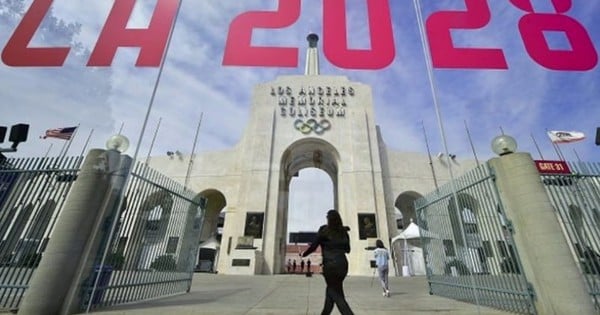According to Mr. Dang Hoai Phuong, Director of Phuong Nam Petroleum Company, world oil prices last week fluctuated slightly in an upward direction compared to a week ago. In the Singapore market, prices of finished products also increased slightly. The difference compared to current domestic prices is about 450 - 570 VND/liter/kg.

Gasoline prices are expected to increase slightly tomorrow. (Illustration: Cong Hieu).
Therefore, according to Mr. Phuong, domestic gasoline prices in tomorrow's adjustment period may continue to increase. If the management agency does not use the gasoline price stabilization fund, gasoline prices may increase by 550 VND/liter, and oil prices by 500 VND/liter.
Similarly, the leader of a petroleum retail business in Hanoi also predicted that the price of RON92 and RON95 gasoline will increase by about 400 - 500 VND/liter, while the price of other types of oil may increase by at least 500 VND/liter, kg.
Thus, if forecasts are correct, domestic gasoline prices may increase again, after a slight increase in the previous period.
Specifically, on January 11, the price of E5 RON92 gasoline was 21,041 VND/liter (up 35 VND/liter), and RON95 gasoline was 21,935 VND/liter (up 19 VND/liter).
Oil prices also increased slightly. Diesel oil prices are no higher than VND19,707/liter (up VND339/liter), kerosene is no higher than VND20,331/liter (up VND374/liter) and fuel oil is no higher than VND15,815/kg (up VND320/kg).
In this management period, the Ministry of Industry and Trade - Ministry of Finance decided to set up a price stabilization fund for fuel oil, not set up for gasoline, diesel oil and kerosene; and not use the fund for all gasoline products.
Specifically, the price stabilization fund for fuel oil is set at 300 VND/kg (as in the previous period), and no fund is set aside for gasoline, diesel and kerosene.
On the world market, at 6:00 a.m. on January 17, Brent oil price was trading at 77.99 USD/barrel, down 0.16 USD/barrel compared to early this morning. Meanwhile, WTI oil price was at 72.4 USD/barrel, down 0.28 USD/barrel.
The dollar hit a one-month high as investors pared expectations that the US Federal Reserve would cut interest rates in March, Reuters reported. A stronger greenback reduces demand for dollar-priced oil from buyers using other currencies.
Forecasts for milder weather in late January in major US manufacturing hubs also weighed on prices, said Jay Hatfield, portfolio manager at InfraCap in New York.
Hatfield noted that warmer weather could reduce demand for heating oil in the Northeast and Midwest.
In contrast to the above bearish factor, oil prices were supported by signs of escalating tensions in the Middle East, as the US military carried out a new attack in Yemen targeting four anti-ship ballistic missiles of Houthi forces.
Houthi attacks on cargo ships in the Red Sea have disrupted global shipping through this vital trade route.
“Tensions in the Middle East are rising so the geopolitical risk premium on oil prices will also increase,” said Tortoise Capital’s Thummel.
Fears of a wider regional conflict grew when Iran struck targets in Iraq’s semi-autonomous Kurdish region on January 16. Iran has also struck IS positions in Syria.
Despite the escalation, oil traders appear to be waiting for clear evidence of supply disruptions before they push prices higher, said Fiona Cincotta, an analyst at City Index.
PHAM DUY
Source


![[Photo] Phuc Tho mulberry season – Sweet fruit from green agriculture](https://vstatic.vietnam.vn/vietnam/resource/IMAGE/2025/4/10/1710a51d63c84a5a92de1b9b4caaf3e5)
![[Photo] Prime Minister Pham Minh Chinh chairs meeting to discuss tax solutions for Vietnam's import and export goods](https://vstatic.vietnam.vn/vietnam/resource/IMAGE/2025/4/10/19b9ed81ca2940b79fb8a0b9ccef539a)

![[Photo] Summary of parade practice in preparation for the April 30th celebration](https://vstatic.vietnam.vn/vietnam/resource/IMAGE/2025/4/11/78cfee0f2cc045b387ff1a4362b5950f)

























































































Comment (0)